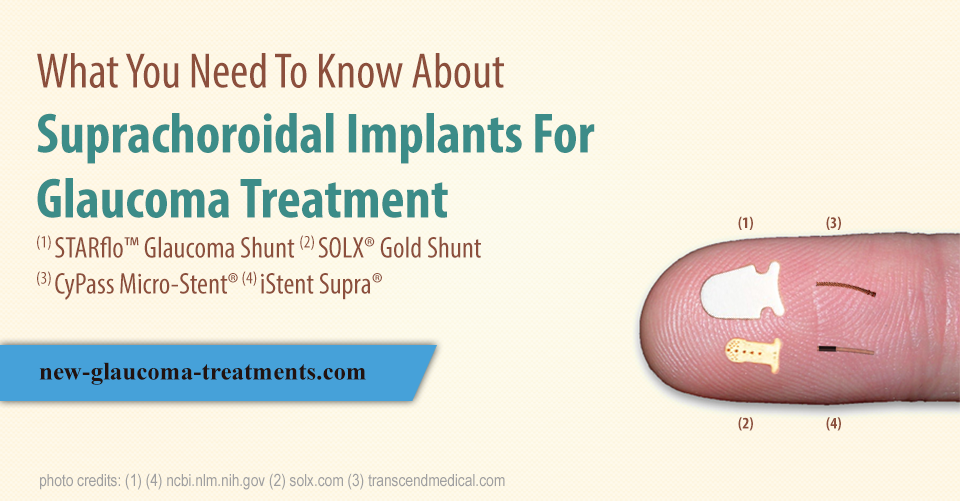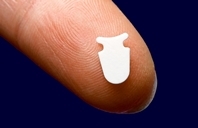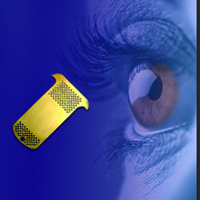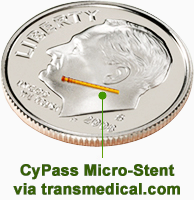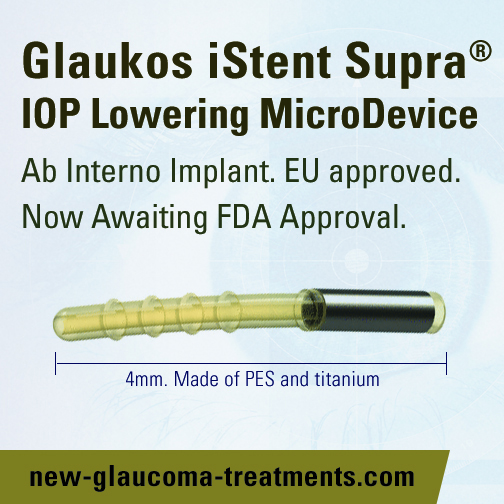What Are Suprachoroidal Implants?
The Aqueous Fluid Pathways
Aqueous fluid leaves the eye through two main pathways. The more commonly discussed “conventional” pathway is through the trabecular meshwork, Schlemm’s canal, and collector channel system. This is the pathway that surgeries such as canaloplasty attempt to restore.
Fluid may also exit through the “unconventional” uveoscleral pathway. The uvea is a grey-brown tissue sandwiched between the wall of the eye (sclera) and the retina. It is filled with small blood vessels that can absorb aqueous fluid. The prostaglandin analog class of medications works on this pathway.[1]
What Is the Suprachoroidal Space?
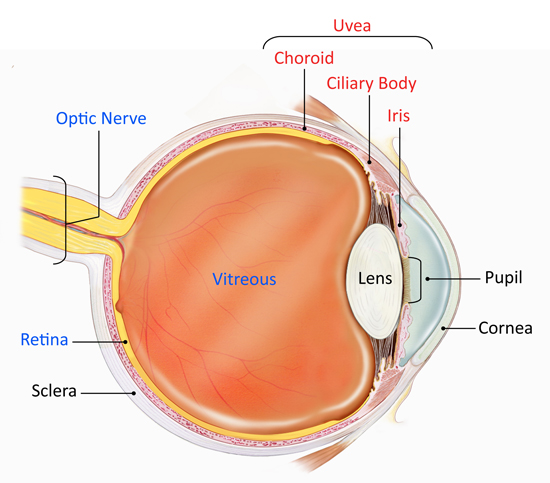
Eye Diagram Showing the Uvea via nei.nih.gov
The uvea is directly exposed to the aqueous fluid in the anterior chamber at the iris root. From there fluid can enter the suprachoroidal space and then exit the eye. The suprachorioidal space is a zone between the sclera (white wall of the eye) and the choroid (filled with blood vessels). From there fluid can enter the blood vessels in the choroid[2] or pass through channels in the sclera[3] and exit the eye.
Why Place an Implant in the Suprachoroidal Space?
As the aqueous fluid naturally drains through the suprachoroidal space, it makes sense that increasing the flow into this space could further lower IOP. Early attempts to do so involved simply separating the root of the iris from the scleral wall. Termed “cyclodialysis”, this created a direct opening from the anterior chamber into the suprachoroidal space.
Although cyclodialysis has been around since 1905 there were a number of significant issues that limited its usefulness as a treatment for glaucoma. It was not possible to titrate the post-operative IOP which often led to an IOP that was too low (hypotony) or too high. Additionally, the rate and severity of complications from cyclodialysis was considered to be unacceptably high.
Many of the complications and risks of cyclodialysis, however, are believed to be avoidable if only something could be placed in the suprachoroidal space that would both limit the size of the cleft as well as prevent scarring of the cleft.[4] The first successful suprachoroidal shunt was reported in 2003 using a modified Krupin glaucoma drainage device.[5] Since that time there has been a flurry of research and development aiming to discover the ideal size, shape, and material for both controlled and sustained shunting of fluid into the suprachoroidal space.
Types of Suprachoroidal Implants
Suprachoroidal implants are divided into “ab externo” or “ab interno” categories. Ab externo simply means that the implant is placed from the outside of the eye. It is necessary, therefore, to make an incision in the sclera in order to place this type of implant. Ab interno, on the other hand, indicates that the implant is placed from within the eye. These generally require only a small corneal incision and are therefore preferred by most surgeons.
08.29.2018 NEWS UPDATE: Alcon announces voluntary global market withdrawal of CyPass Micro-Stent for surgical glaucoma | SOURCE: http://new-glaucoma-treatments.com/does-the-cypass-glaucoma-implant-damage-the-eye/
Ab Externo Implants
- STARflo™ Glaucoma Shunt
- SOLX® Gold Shunt
Ab Interno Implants
- CyPass Micro-Stent®
- iStent Supra®
References
- Toris CB. Pharmacotherapies for glaucoma. Curr Mol Med. 2010;10(9):824-840.
- Pederson JE, Gaasterland DE, MacLellan HM. Uveoscleral aqueous outflow in the rhesus monkey: importance of uveal reabsorption. Invest Ophthalmol. 1977;16:1008.
- Bill A. The aqueous humor drainage mechanism in the cynomolgus monkey (Macaca irus) with evidence for unconventional routes. Invest Ophthalmol. 1965;4:911.
Krohn J, Bertelsen T. Light microscopy of uveoscleral drainage routes after gelatine injection into the suprachoroidal space. Acta Ophthalmol Scand. 1998;76:521-527. - Klemm M, Balazs A, Draeger J, et al. Experimental use of space-retaining substances with extended duration: functional and morphological results. Graefes Arch Clin Exp Ophthalmol. 1995;233:592-59
- Ozdamar A, Aras C, Karacorlu M. Suprachoroidal seton implantation in refractory glaucoma: a novel surgical technique. J Glaucoma. 2003;12:354-359.
- Ozdamar A, Aras C, Karacorlu M. Suprachoroidal seton implantation in refractory glaucoma: a novel surgical technique. J Glaucoma. 2003;12:354-359.
Related Articles:
- European Trial Of STARflo™ Glaucoma Shunt Has Begun
- SOLX® Gold Micro Shunt – The 24-carat (99.95% Pure) Gold Treatment For Glaucoma
- CyPass MicroStent® Glaucoma Device Awaits FDA Approval
- Glaukos iStent Supra® Is Now Awaiting FDA Approval
- Glaukos iStent: A Quick Review and Commentary
- Suprachoroidal Implants (SOLX®, STARflo™, iStent Supra®, CyPass®)
Don’t delay getting checked for glaucoma.
Make an appointment with an eye doctor in your area now. If you live in the greater Los Angeles area and would like Dr. Richardson to evaluate your eyes for glaucoma call 626-289-7856 now. No referral required. Appointments are available, Tuesday through Saturday.

